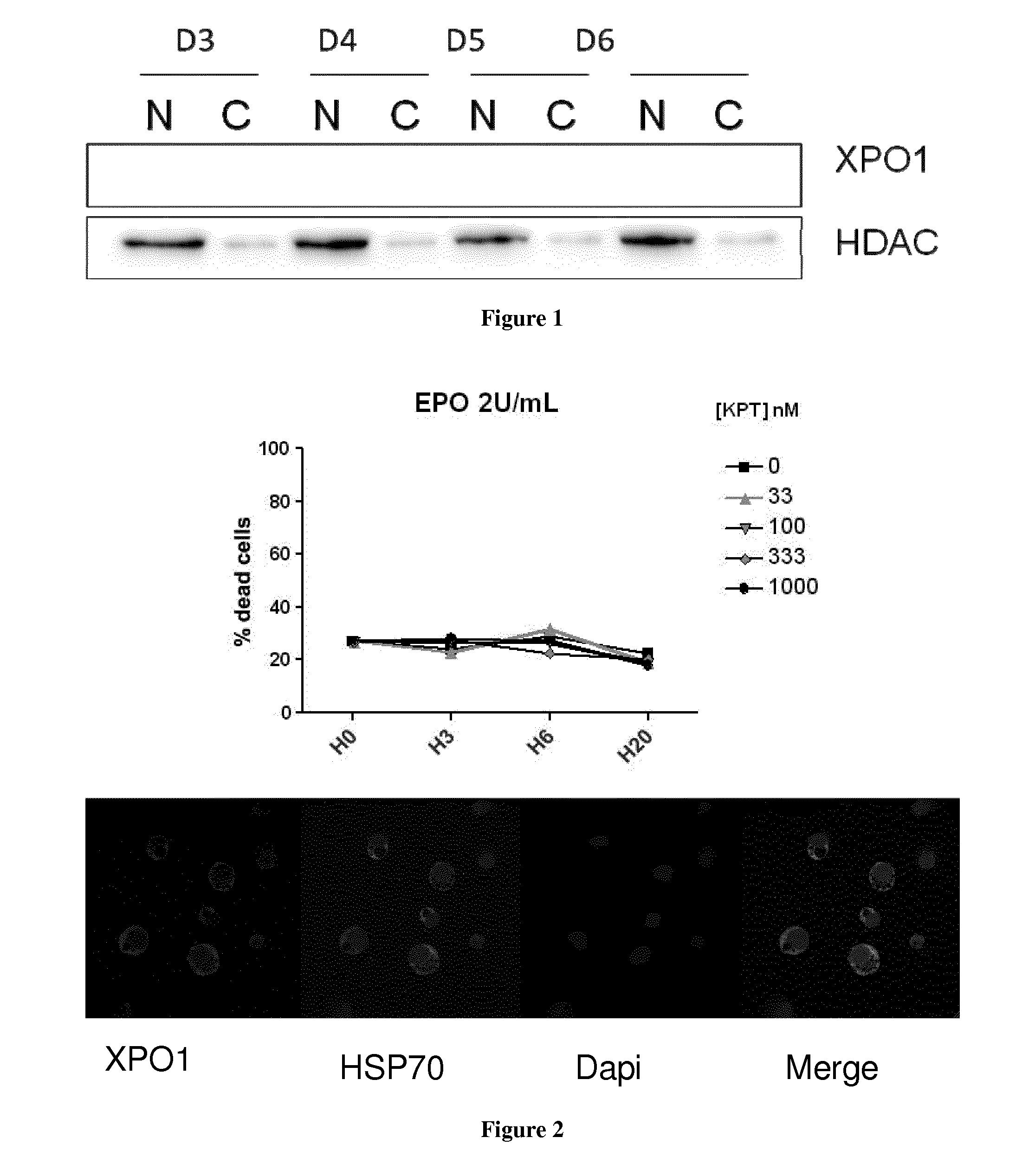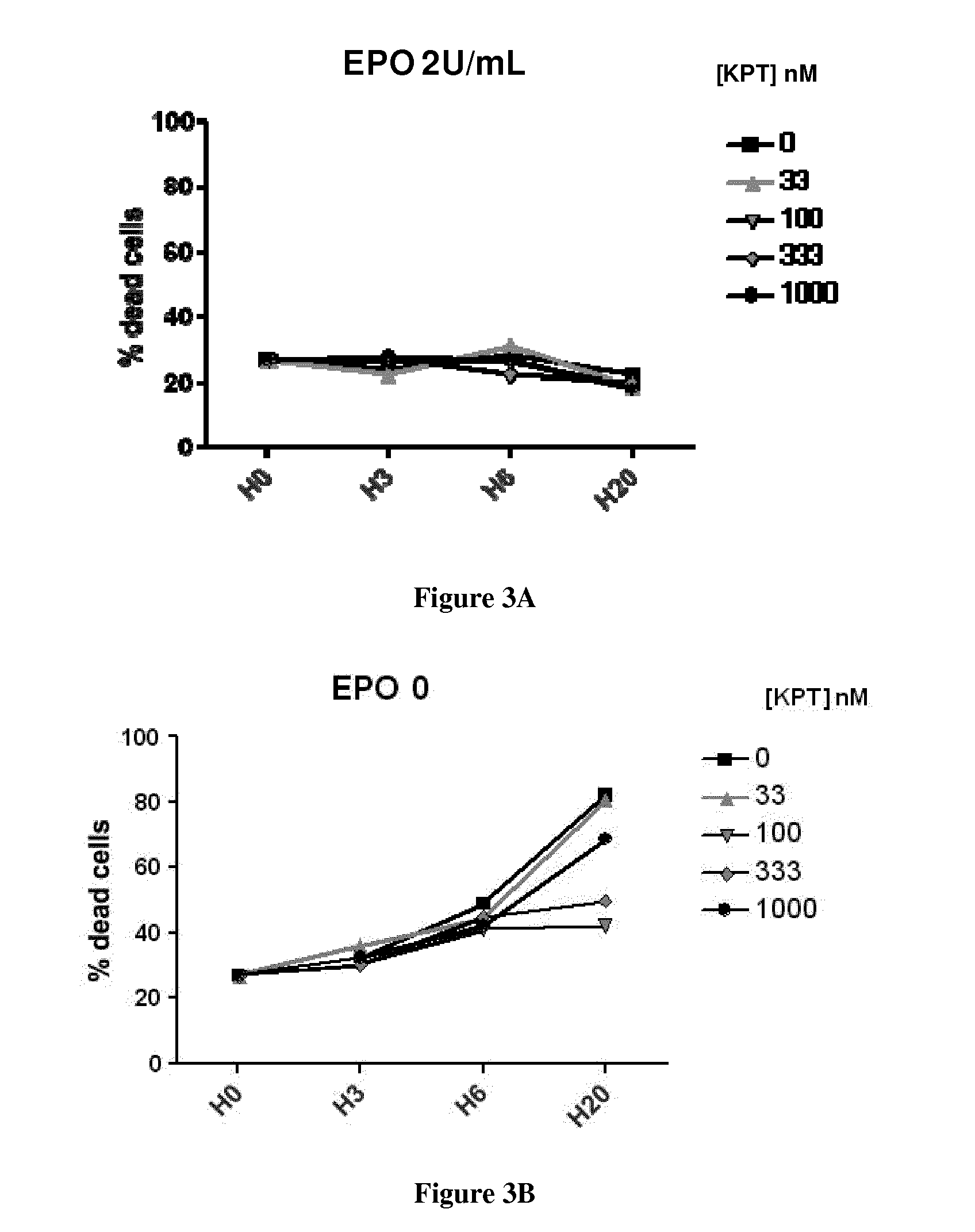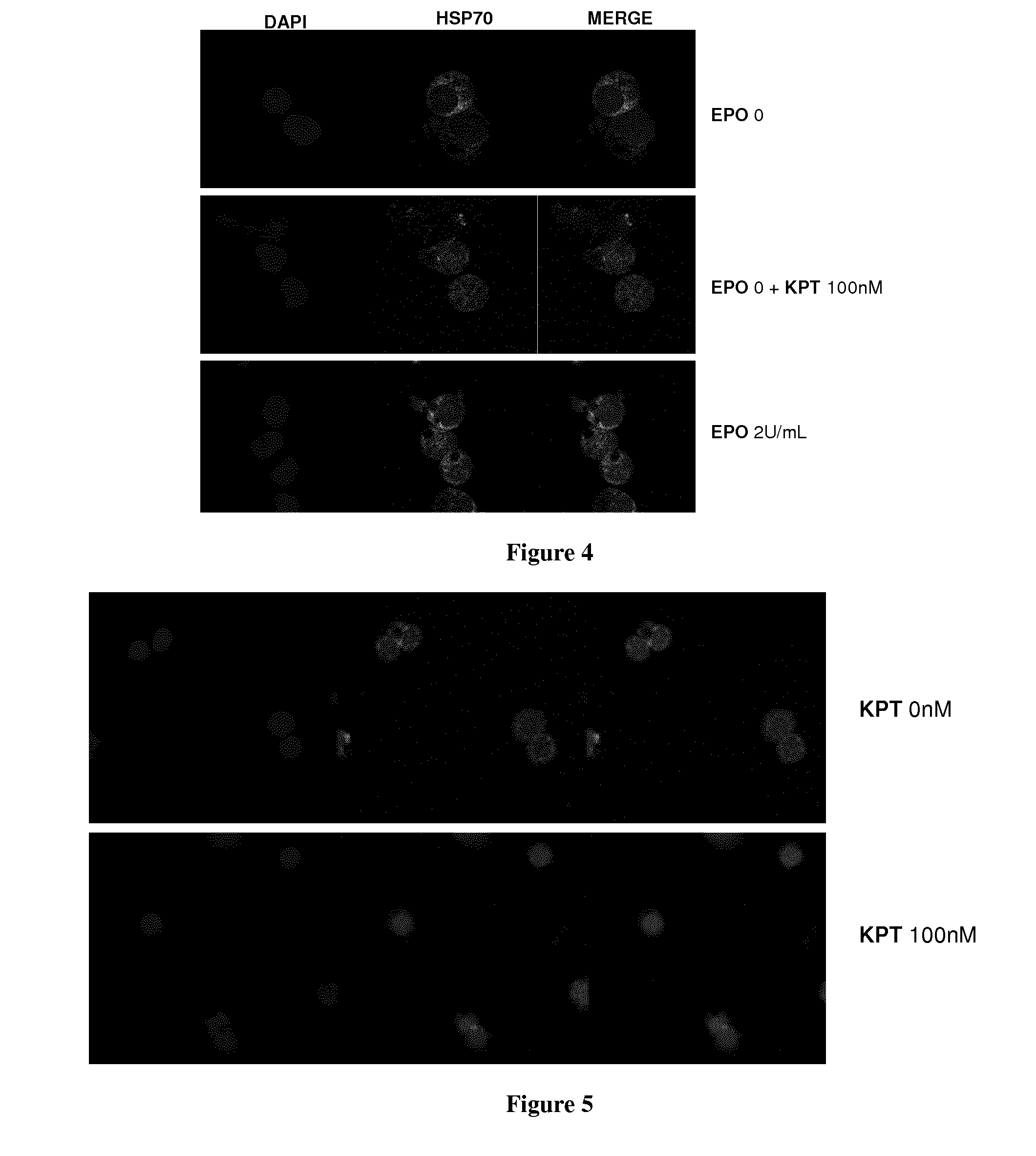Methods and pharmaceutical compositions for the treatment of beta-thalassemias
a technology of beta-thalassemia and pharmaceutical compositions, applied in the direction of drug compositions, extracellular fluid disorders, instruments, etc., can solve the problems of immature erythrocyte apoptosis, maturation arrest, and insufficient binding of hsp70
- Summary
- Abstract
- Description
- Claims
- Application Information
AI Technical Summary
Benefits of technology
Problems solved by technology
Method used
Image
Examples
example 1
Background
[0058]It has been published by our lab (Ribeil et al., Nature 2007) that Leptomycin B (LMB), a chemical inhibitor of XPO1, induces HSP70 nuclear retention in erythroid precursor cells. This observation suggests that XPO1 might be involved in the nuclear export of HSP70 protein in erythroid precursor.
[0059]During erythroid precursor cell differentiation, the nuclear accumulation of HSP70 protein is essential. In fact, in the nucleus, HSP70 protects GATA1 transcription factor from Caspase-3 degradation.
[0060]In the case of two pathologies with dyserythropoiesis: myelodysplastic syndrome (MDS) and beta-thalassemia, a defect in nuclear localization of HSP70 in erythroid progenitor cells has been assessed (Frisan et al. Blood 2012, Arlet et al unpublished data). Thus, we suggest that it would be of interest to repress XPO1-induced HSP70 nuclear export to restore HSP70 protein nuclear localization in erythroid precursors cells, and therefore improve erythroid precursors differen...
example 2
[0075]Data from FIG. 6 and FIG. 7 are from two different experiments on CD36+ cells from a beta-thalassemia patient. Data from FIG. 8 have been performed with cells from FIG. 7 experiment. Beta-thalassemia erythroblasts were generated in vitro from peripheral blood circulating CD34+ cells from an adult patient with beta-thalassemia major (β0-TM). This study was performed according to the Helsinky Declaration with approval from the ethics committee of our institution.
[0076]Treatment with KPT at 1000 nM shows decreased proliferation compared to KPT 0 and KPT 100 nM, only in the experiment where patient cells have a high proliferation rate in control condition (FIG. 6a and FIG. 7a). Treatment with KPT at 1000 nM shows little cytotoxicity compared to KPT 0 and KPT 100 nM (FIG. 6b, FIG. 7b).
[0077]In vitro, maturation is arrested at the polychromatophilic stage in beta-thalassemia erythroid progenitors. To quantify the maturation arrest in beta-thalassemia cells, we use an index of termin...
PUM
| Property | Measurement | Unit |
|---|---|---|
| TM | aaaaa | aaaaa |
| oxidative stress | aaaaa | aaaaa |
| secondary structure | aaaaa | aaaaa |
Abstract
Description
Claims
Application Information
 Login to View More
Login to View More - R&D
- Intellectual Property
- Life Sciences
- Materials
- Tech Scout
- Unparalleled Data Quality
- Higher Quality Content
- 60% Fewer Hallucinations
Browse by: Latest US Patents, China's latest patents, Technical Efficacy Thesaurus, Application Domain, Technology Topic, Popular Technical Reports.
© 2025 PatSnap. All rights reserved.Legal|Privacy policy|Modern Slavery Act Transparency Statement|Sitemap|About US| Contact US: help@patsnap.com



